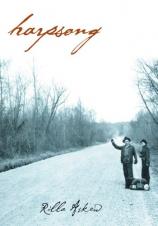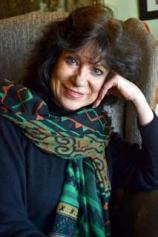Reading Group Guide
Discussion Questions
Harpsong

1. A novel set in Depression-era Oklahoma invites comparison with John Steinbeck's Grapes of Wrath. Compare the characters in Harpsong with the Joad family in Steinbeck’s mythic novel. Compare and contrast the incidents in both novels. Where do Steinbeck’s and Askew’s themes seem to intersect or diverge? In what ways do they paint similar or differing portraits of Oklahomans in that era?
2. What is it about Harlan Singer that causes the people to talk about him and eventually claim him as a folk hero? Consider other characters in history, literature, or folktale with whom he might be compared. In what ways does Harlan’s character justify how the people mythologize him, and in what ways does it not?
3. Harpsong is divided into three sections, told in three voices. Discuss the ways in which each voice renders a portion of the truth of the story. Where do the understandings of each voice contradict or deny one another?
4. The narrative structure in Harpsong is similar in Parts One and Two but changes dramatically in Part Three. Trace the structure of the novel, considering what the reader knows when and how that influences the reader’s understanding of underlying themes.
5. Sharon narrates the majority of the novel. Of the three voices, is hers the one that tells the “real truth” about Harlan, as she claims? Why or why not? What does Sharon want in her life with Harlan? She speaks of “the third desire of [her] heart.” What is that?
6. Discuss the themes of sin and redemption, hope and hopelessness that permeate the novel. What are the differences between Harlan and Sharon in terms of their understanding of sin? Of salvation?
7. What is Harlan’s “sin” that so causes him to feel he needs redemption? How does he seek redemption? Does he achieve it in the end?
8. Discuss the old man’s notion of “sixty-forty.” Does the novel seem to indicate this is a fairly accurate proportion of good to evil, decency to cruelty, in humans?
9. What is the relationship between history and folktale in Harpsong? In America’s ongoing narrative of itself? Discuss the impulse in people to create mythic heroes. Is the need greater in times of overwhelming despair, or do we continue to create larger-than-life heroes in good times as well as bad?
10. What historical events inform Harpsong? Consider which events are based in historical and geographical fact and which are a part of the folktale. Discuss the events in Harpsong in relation to oral histories handed down in readers’ families that tell stories about the Great Depression.
Harpsong
- Publication Date: May 15, 2007
- Hardcover: 256 pages
- Publisher: University of Oklahoma Press
- ISBN-10: 0806138238
- ISBN-13: 9780806138237








